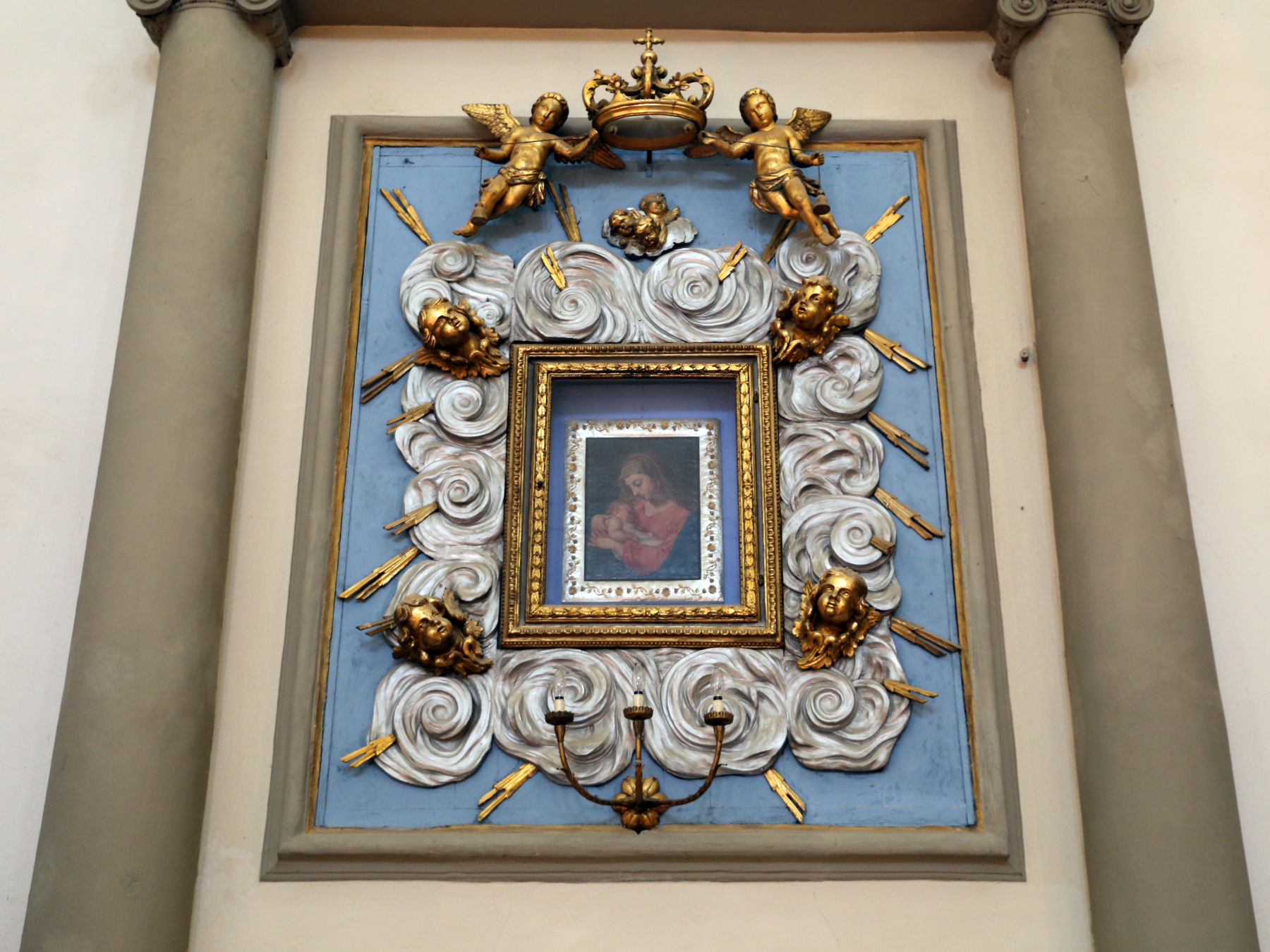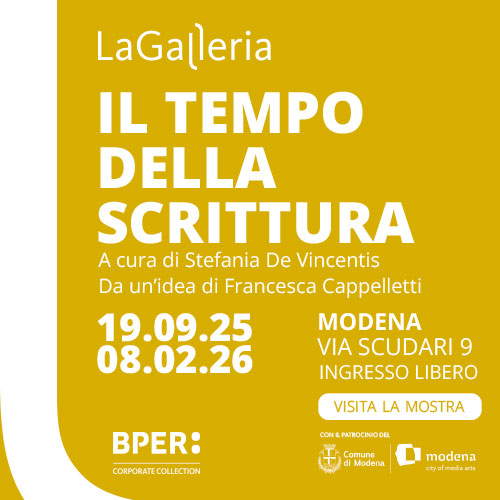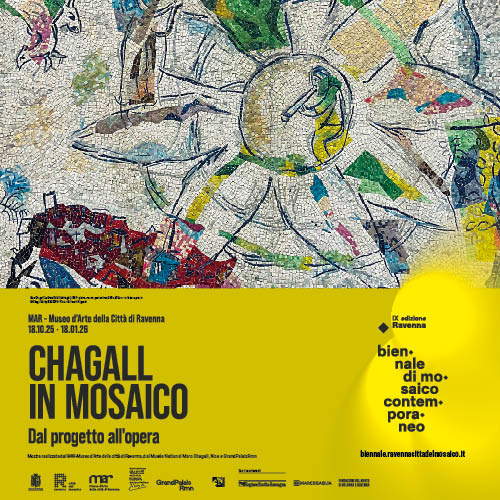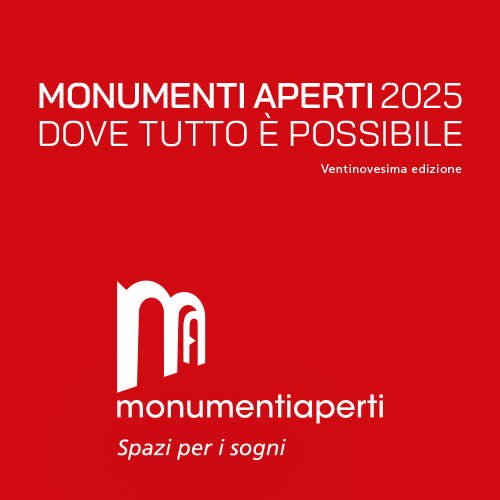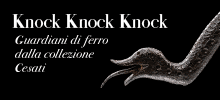
Art Nouveau itinerary in Mugello: discovering the heritage of the Chinis and their works
Mugello is home to one of the richest nuclei of Italian Art Nouveau, born of the ingenuity of the Chini family: a dynasty that intertwined ceramics, architecture and applied arts, leaving a widespread legacy in palaces, churches and villas. Here is an itinerary to discover Art Nouveau in Mugello.
By Noemi Capoccia | 19/11/2025 18:11
Mugello, the wide valley that opens around the Sieve River in Tuscany, north of Florence, holds one of the most important chapters of Italian Art Nouveau, and this is mainly thanks to the history of the Chini family, protagonist of an artistic path that links ceramics, decoration, architecture and applied arts and that has left here a significant part of its production, so much so that it is possible to imagine an Art Nouveau itinerary that leads among palaces, churches and villas where precious interventions are preserved, now also documented by the Liberty Mugello portal. The roots of the dynasty go back to Pietro Alessio Chini (1800-1875), a 19th-century classicist painter, followed by Leto, Dario, Tito and Lino, who consolidated a family cultural heritage destined to flourish with Galileo Chini. Born in Florence in 1873, Galileo became a central figure of European Art Nouveau thanks to a refined language of rhythmic lines, chromatic elegances and naturalistic references. In 1897 he founded the Manifattura dell'Arte della Ceramica, which was joined by his cousin Chino; in 1906 the two opened the Fornaci San Lorenzo in Borgo San Lorenzo, marking the beginning of an innovative creative season.
For forty years the Fornaci produced ceramics, stained glass, wrought iron, furniture and architectural interventions, involving the entire family and resulting in refined works that anticipated the Déco taste. After Galileo's departure for Siam, the artistic direction passed to Tito and then to Augusto, who rebuilt the factory after the bombing in 1943, launching the new season of the Pecchioli-Chini furnaces, active to this day. Their achievements deeply marked Mugello: from the restorations following the 1919 earthquake to the decorations of villas and churches and cemeteries. This is where the Art Nouveau and Chini Art Itinerary takes shape, an itinerary that passes through different places in Mugello. Here, then, is where we can find the Chini family's Art Nouveau works.
1. Borgo San Lorenzo
Borgo San Lorenzo has seen many members of the Chini family born, live and work, becoming the hub of their multifaceted creativity. The main town and its hamlets hold their works, linked in an itinerary that offers considerable cultural and tourist value. Here the Villa Pecori Giraldi stands out. Originally a fortress of the Giraldi family, local nobles, it passed in 1748 to Count Antonio Pecori, who added the Giraldi surname to his own. In 1902, General Guglielmo Pecori Giraldi entrusted its restoration, giving it its current appearance: two floors, Renaissance facade and crenellated tower inspired by the nearby Cafaggiolo villa. The villa was donated to the municipality in 1979. TheOratory of theSantissimo Crocifisso, built in the 18th century on the site of the Compagnia del Corpus Domini, on the other hand, holds a wooden crucifix from the late 14th century and . Badly damaged by the 1919 earthquake, it was largely rebuilt in the following decades, preserving the memory of the Compagnia dei Neri. Under the atrium of the shrine is a large relief majolica lunette with the coats of arms of the Mugello municipalities, made by Augusto Chini. Inside the church is a fine majolica panel depicting St. John the Baptist, which combines medieval, Renaissance and Art Nouveau elements. There is a second example, from the same design, attributed to Galileo Chini.
In addition, the Confraternity of Mercy, founded in 1847, inaugurated in 1904 its new headquarters designed by engineer. Niccolò Niccolai, who also built a chapel next door, inaugurated in 1908. The building reflects the medievalist taste of the time: gabled façade in concrete and faux stone, lunette portal, cusp with ogival arches, large polychrome oculus and sequence of arches along the roof. The single-nave interior ends with a semicircular apse and Gothic coffered vault; the side altars and furnishings are the work of the Fornaci San Lorenzo, founded by Galileo, Chino and Pietro Chini. Other stops on the itinerary include the Villino Chini in Viale IV Novembre, the Village San Francesco in Senni, the Poggiolo Salaiole Chapel in Salaiole, the Church of San Pietro in Luco, and the Tabernacle of San Francesco in Via San Francesco.


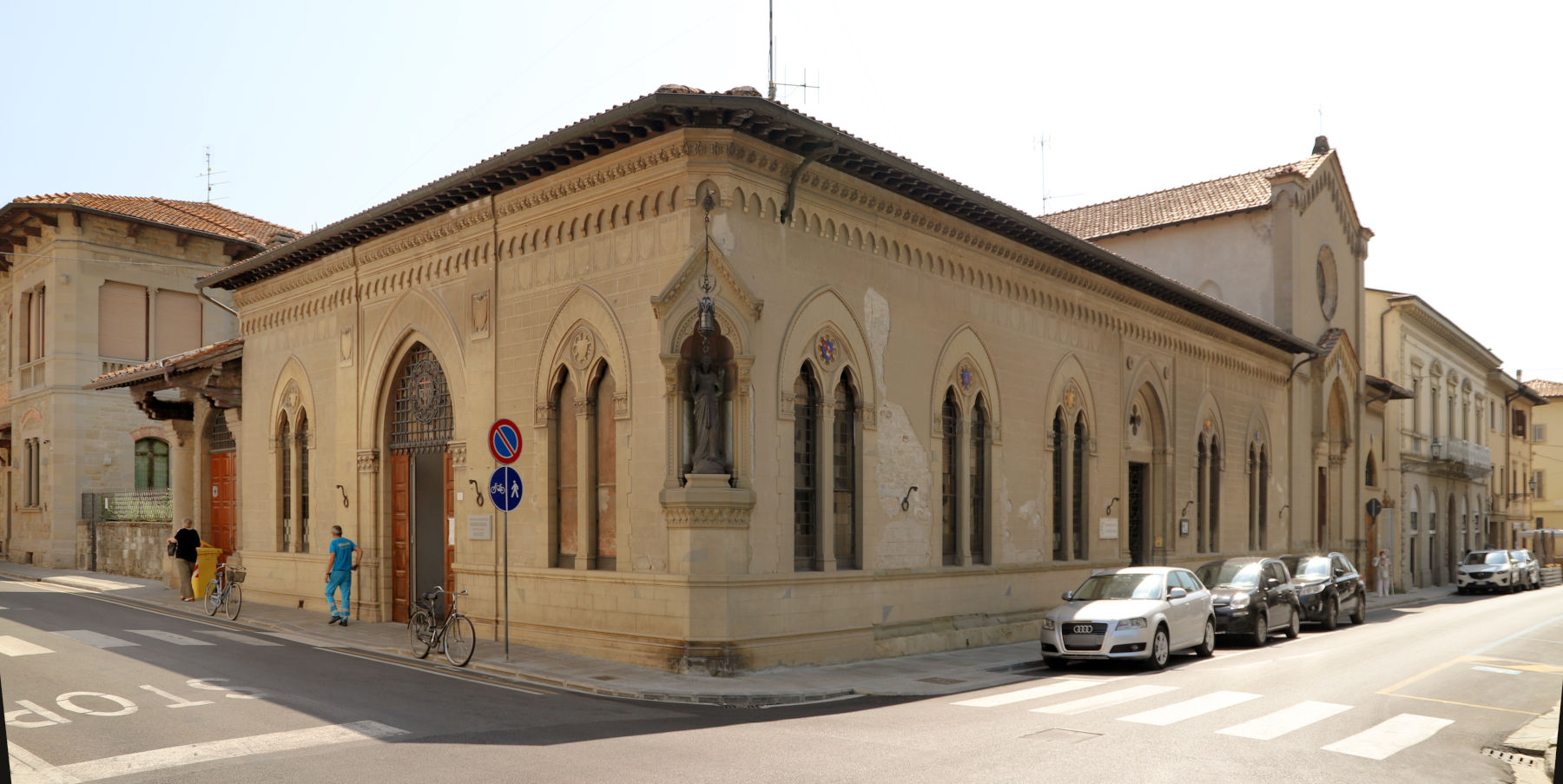
2. Barberino di Mugello
In Barberino di Mugello, the Chinis are not present in large numbers and not all the works can be visited, but those that do exist nevertheless represent artistic testimonies of great importance. The Pieve di San Silvestro, severely damaged by the 2019 earthquake, was recently restored, recovering the paintings by Tito Chini made in 1931 on commission by the pievano Don Giuseppe Focacci. The intervention brought to light the decorations of the walls, choir, main and minor chapels, ceiling beams, sacristy and facade with loggia.
At the Villa medicea di Cafaggiolo, on the other hand, the decoration of the ground-floor hall executed by brothers Leto and Dario Chini in 1887 for Prince Marcantonio Borghese is preserved. The noble and social coats of arms, in neo-medieval style, represent an important testimony to the art of the Chinis of the generation before Galileo, in harmony with the architecture of the building. The Pieve di San Michele in Montecuccoli then holds two polychrome stained glass windows depicting St. John the Baptist and St. Michael the Archangel, made by the Manifattura Chini in the second half of the 1920s, which complete the area's artistic heritage. Other stops along the route include the Church of Santa Maria in Collebarucci and the Lunetta on Via Dante Alighieri.

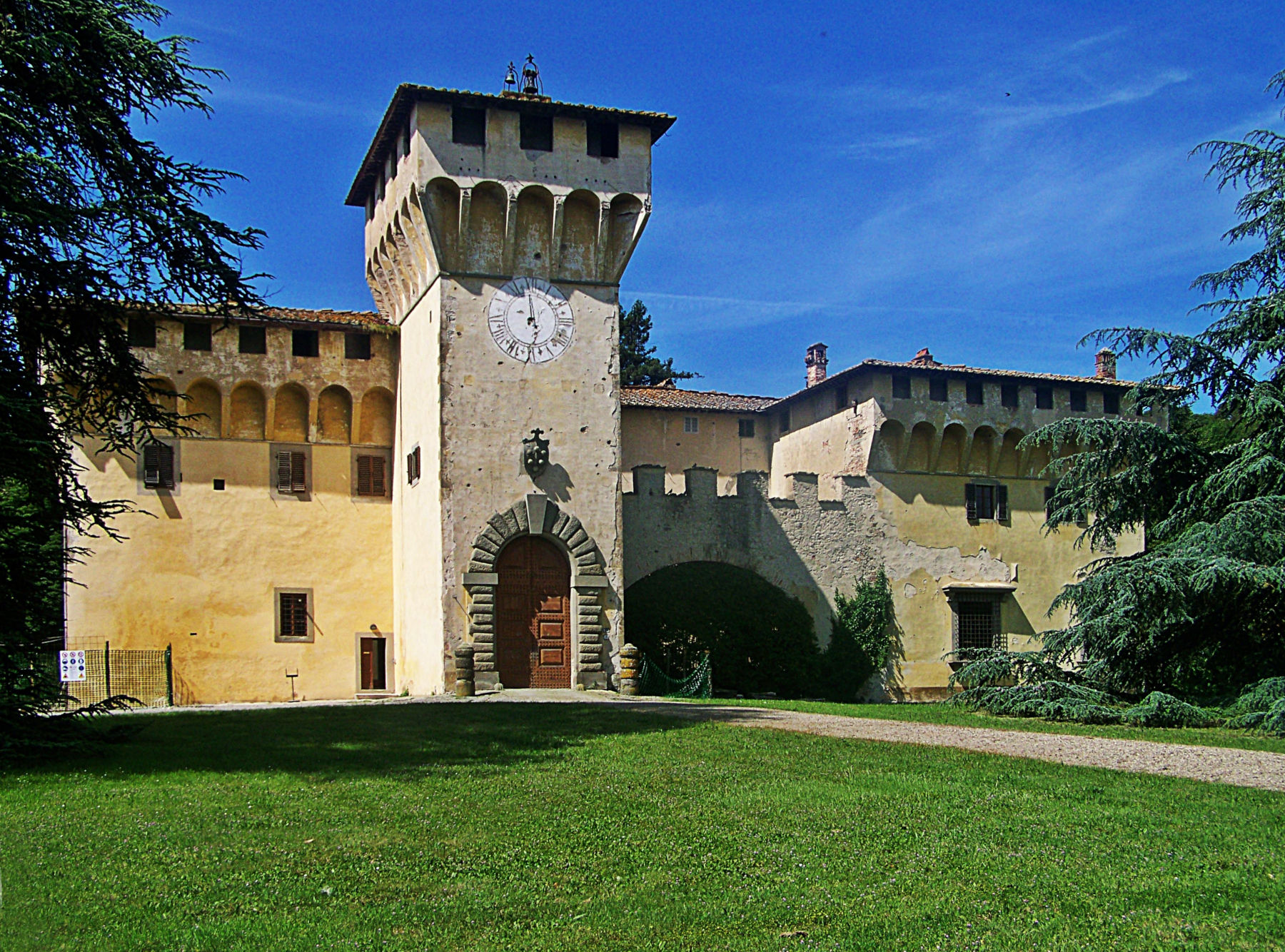

3. Firenzuola
In Firenzuola, many Chinian works are preserved in the churches in the hamlets, since the interventions in the main town were destroyed by bombing. The Church ofSanta Maria a Rifredo holds authentic little-known treasures, starting with the 1920s baptismal font, protected by a wrought-iron gate decorated with geometric motifs in the Klimtian style. The font, with polychrome tiles, echoes the typical jugendstil (German name for Art Nouveau) decorations of the San Lorenzo Furnaces designed by Galileo Chini.
The PievediSan Giovanni Battista in Cornacchiaia houses a stained-glass window depicting the Beheading of the Baptist, with a robust and volumetric design, rich in decorative elements typical of Chini's Manufacture. Probably made by Tito Chini in the second half of the 1920s, it represents one of the most brilliant examples of Mugello glassmaking, preserved in excellent condition. TheChurch of Saints Jacopo and Christopher in Visignano also offers a series of polychrome stained glass windows that illuminate the room. Some bear geometric or symbolic motifs such as stars, crosses and lilies; others depict saints within roundels. Some windows bear inscriptions confirming that they belong to the San Lorenzo Furnaces, which can also be dated to the second half of the 1920s.
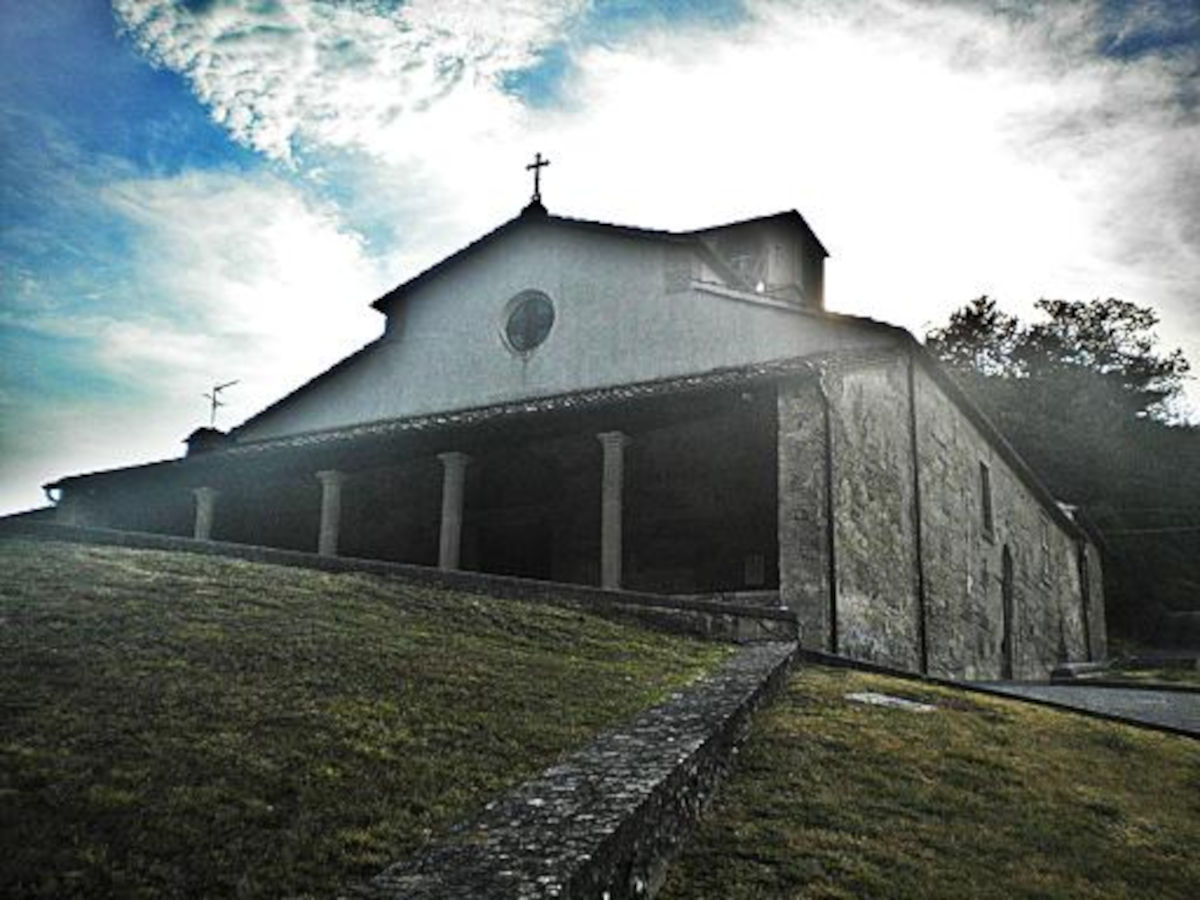
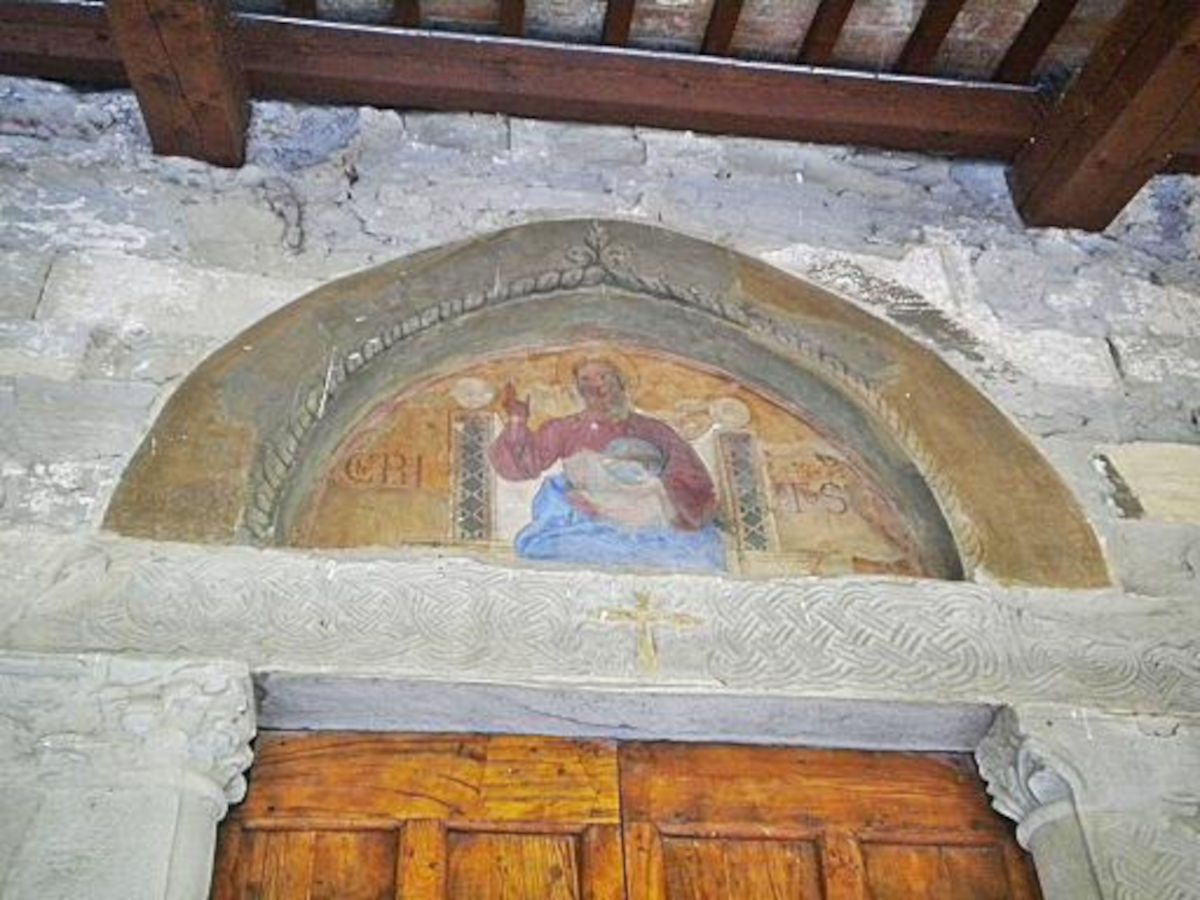
4. Marradi
In the historic center of Marradi, Palazzo Torriani represents the main treasure chest of Chini's Liberty style with works and decorations created by Galileo Chini himself. Some of the palace's large, elegant and central rooms display ceilings and walls adorned with paintings characterized by refined chromatic and graphic harmony. The fantasy of the subjects and plant elements clearly show the hand of Galileo, who worked there in the early 20th century.
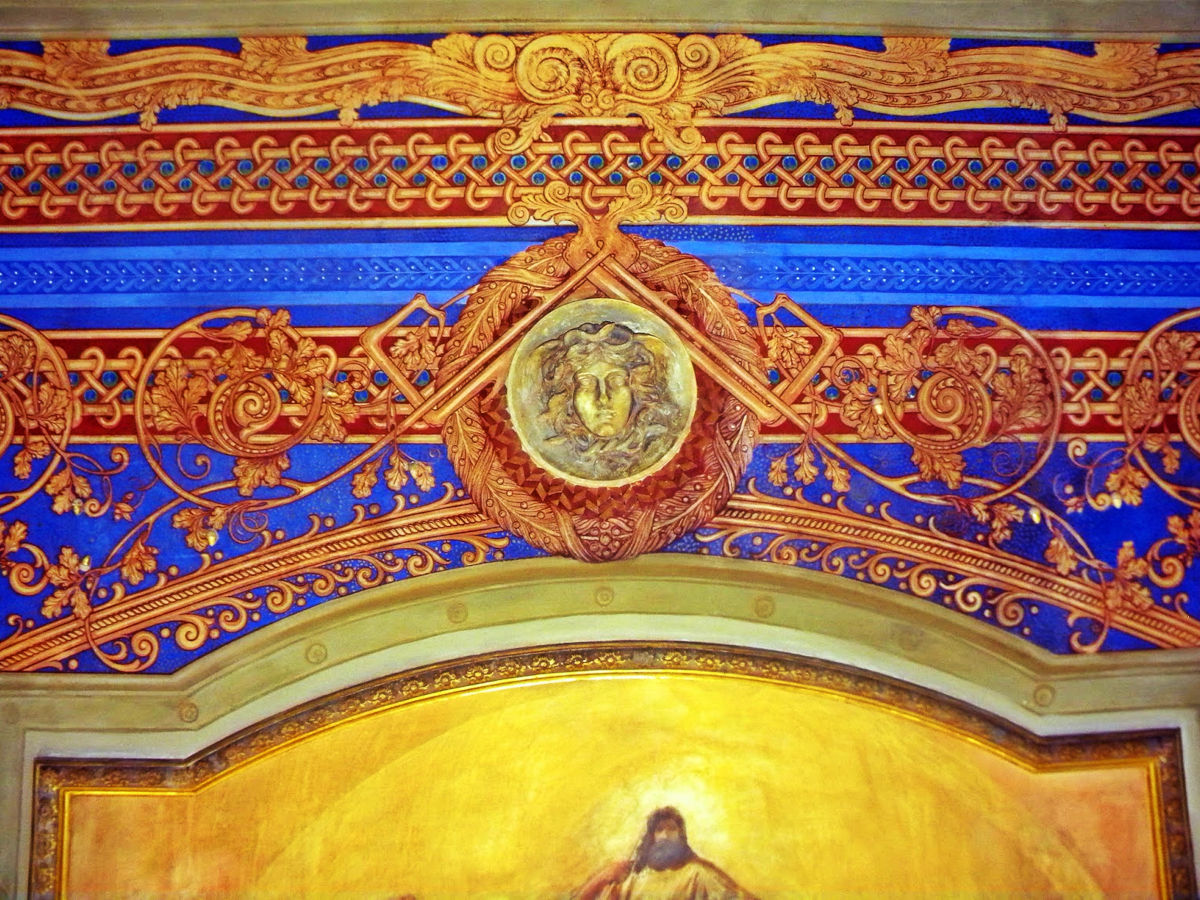
5. Palazzuolo sul Senio
In Palazzuolo sul Senio, much of the artistic decoration bears the signature of Tito Chini. TheOratory of Saints Charles and Anthony preserves a fine series of panels of the Stations of the Cross, made by Tito in the early 1920s, comparable to those in the chapel of Poggiolo Salaiole in 1923. In the church of Saints Egidio and Martino in Salecchio, on the other hand, there are well-preserved polychrome stained-glass windows, with figures of saints within stylized lotus-flower roundels and frames. The realistic and plastic style dates the works to the 1930s, a period when the manufacture, while adhering to a more traditional language, maintained high technical and artistic quality.
Among Chini's finest achievements in Mugello is theChapel of the Fallen in Palazzuolo, completed by Tito Chini himself in 1925 with materials from the Fornaci San Lorenzo. The room is decorated with plant festoons, tiles with geometric motifs, and walls adorned with plant and geometric motifs that extend to the vault, from which hangs a wrought-iron and glass chandelier. The Parish Church of Santo Stefano, the Town Hall of Palazzuolo sul Senio, the Sanctuary of the Madonna della Neve in Quadalto, and the Abbey of Santa Maria in Susinana also complete the itinerary.
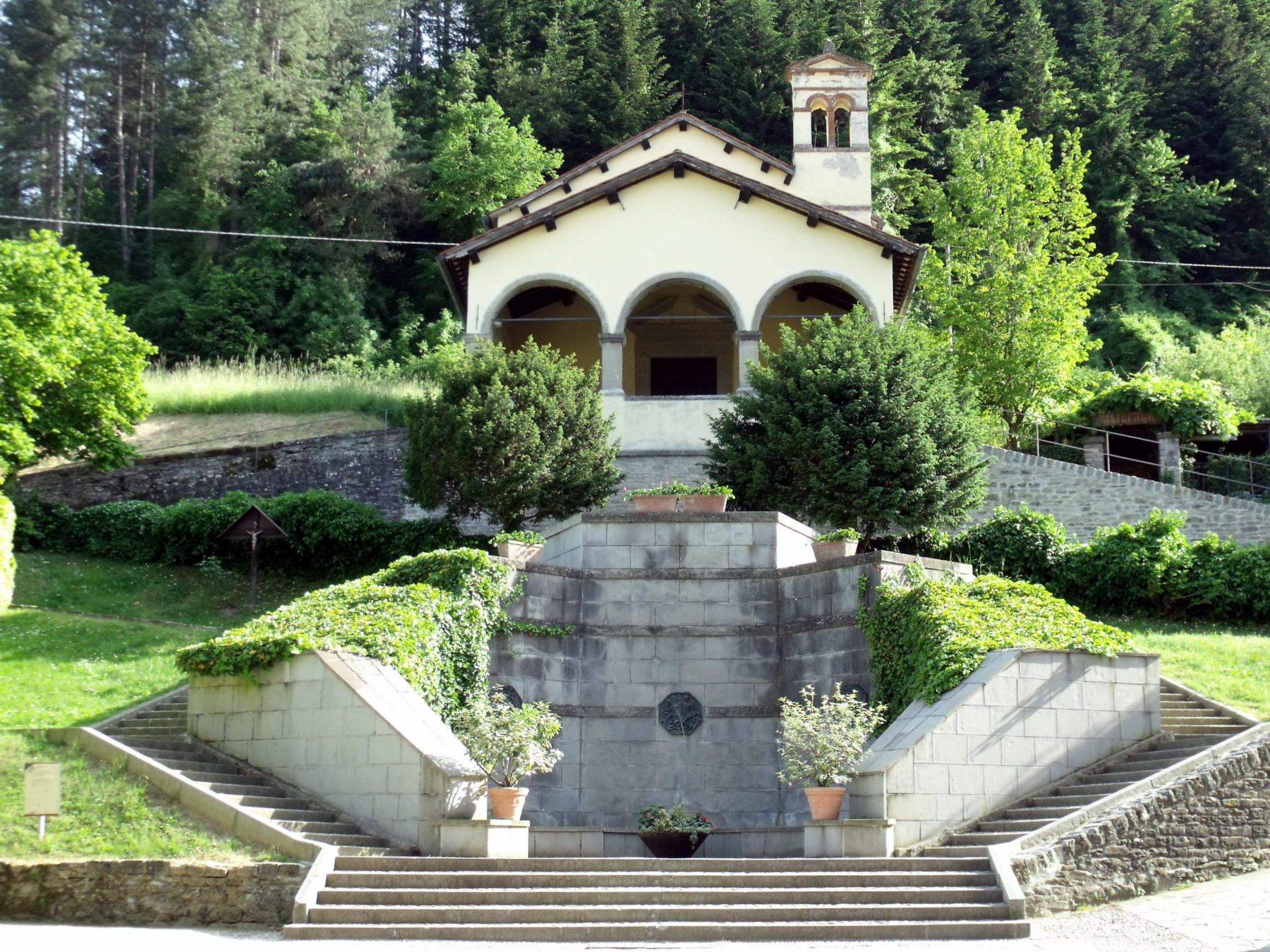

6. Scarperia and San Piero
In the territories of Scarperia and San Piero a Sieve, neighboring Borgo San Lorenzo and home to the Manifattura San Lorenzo, the art of the Chinis is widely present. The Scarperia cemetery preserves the terracotta tomb of Leto Chini, made by Fornaci San Lorenzo around 1910. The burial includes a headstone with an inscription, six stoneware pillars decorated with geometric motifs, and a large slab depicting the dead Christ lying on a rope stretcher and dressed in priestly robes. The style, severe and solemn, is linked to a refined decorative repertoire and a linear design, consistent with the work's function.
In San Piero a Sieve there are in addition other important works by the Fornaci San Lorenzo, such as the tombstone of Giulia Cavicchi, who died at the age of 23 in 1910. Designed by Galileo Chini, the slab follows the traditional typology of the fifteenth- and sixteenth-century terracotta tomb, but depicts St. Giulia in place of the deceased, in a refined symbolic translation. The stoneware work highlights elegant, serpentine lines, in full Art Nouveau style. The farm villa Il Palagiaccio, on the other hand, retains a relevant decorative heritage, with fine coats of arms and heraldic enterprises, including a painted marriage shield on the southern elevation, beneath the tower's medieval battlements. The coat of arms, uniting the Leonetti and Spinelli families, appears to be the work of Leto, Pio or Dario Chini, followers of the tradition of their father Pietro Alessio. The intervention is part of the purist and neo-medieval restoration phase of the villa, between the late 19th and early 20th centuries, and reflects the spirit of the time, in which the Middle Ages were reinterpreted as an aesthetic and cultural model.
The tour continues with the Church of San Giovanni Battista in Senni, the Church of San Bartolomeo in Petrone, the Church of San Bartolomeo in Petrone, the Convent of San Bonaventura al Bosco ai Frati in Lucigliano, the Former Town Hall of San Piero a Sieve in Pizza Colonna, and the Pieve di San Pietro in San Piero a Sieve.
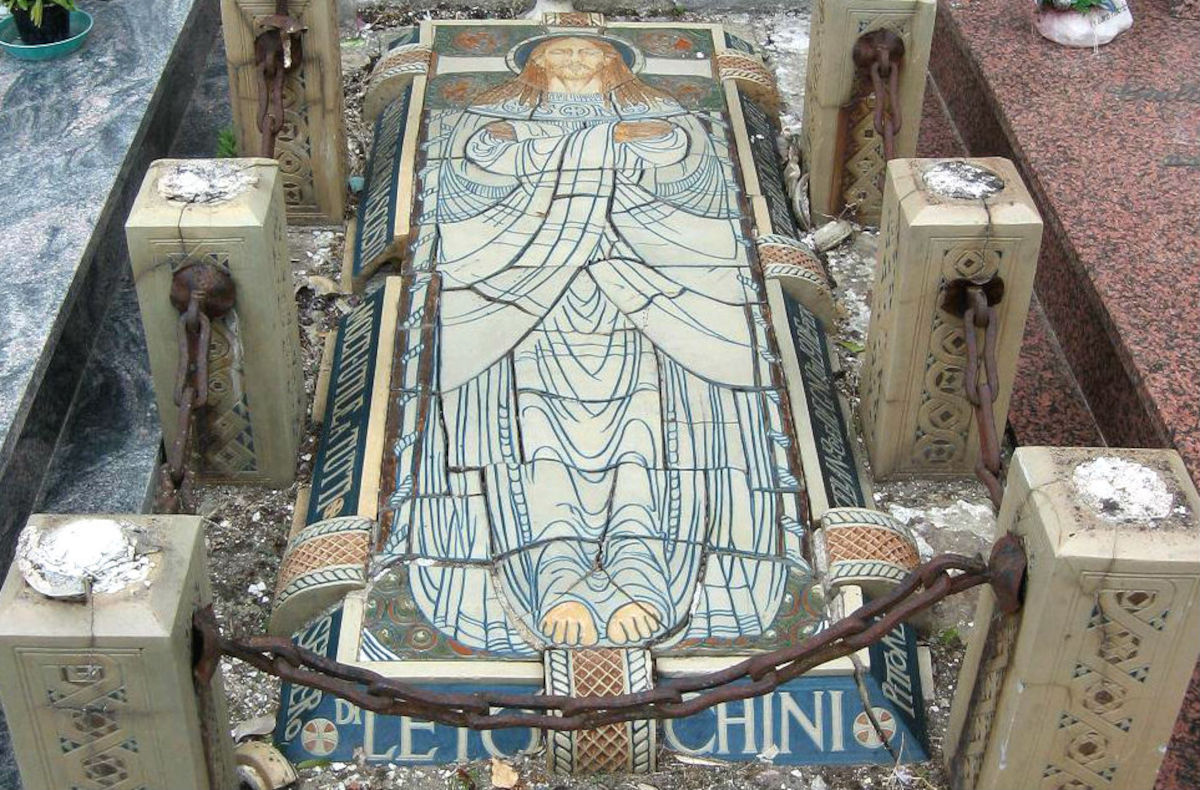
7. Vicchio
In Vicchio, some churches still preserve works from the Manifattura San Lorenzo, such as the Pieve di San Martino. The splendid ogival lunette on the portal of the Pieve, dated 1926, was made by the Fornaci San Lorenzo on commission from the parish priest Pietro Tesi. The subject is designed by Tito Chini, who took up the rich decorative repertoire introduced by Galileo Chini, with zigzag bands, squares and polychrome lozenges. In the center stands out the majestic figure of St. Martin of Tours, frontally represented and clad in bishop's vestments, flanked by two coats of arms: that of the patron's family and that of the parish.
Inside theChurch of St. Bartholomew in Molezzano, on the other hand, an elegant baptismal font in dark glazed ceramic is preserved, made from one of the planters designed by Galileo Chini for the Berzieri spa in Salsomaggiore in the early 1920s. The panel at the bottom of the small room, composed of polychrome majolica, depicts the Baptist. Also an important stop on the itinerary is the Church of San Giovanni in Piazza Giotto, which completes the picture of Chini evidence in Vicchio.
